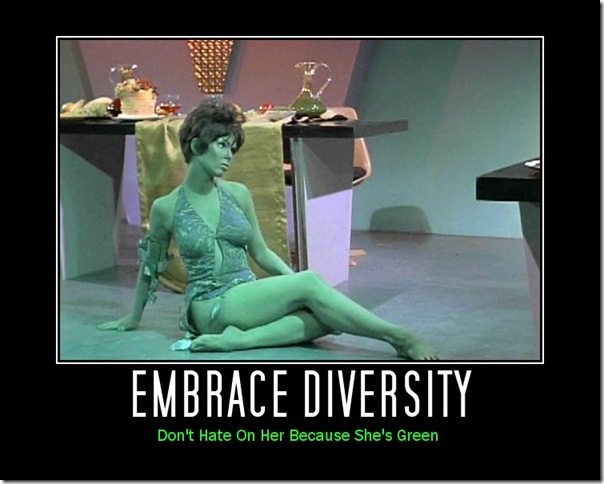Hey everyone, Reecius here from Frontline Gaming to discuss why taking a wide variety of units is a good idea in competitive 40K.
Yo, yo, yo my peeps, Reecius here to tell you that my flavor is good!
And also to tell you that taking a list with a wide variety of unit types will help to strengthen your game.
Am I saying that these lists are the best or better than spam lists or anything like that? No, of course not. I am simply making the case for what you often see internet pundits deem as “bad” lists because they don’t involve rinse and repeat unit selections. Also, this article isn’t saying you can’t repeat units, just that you don’t necessarily have to.
When I say take a diverse list I also don’t mean just arbitrarily select anything from a dex willy-nilly and expect it to all come together. Playing a diverse list means having a broader range of strengths but less pure power any any given category. This means that generally you have to have a higher skill level to play the list well as it is less forgiving. What I mean by this is that if you only have a single unit that can deal with AV14 at range and that unit gets destroyed before it can do its job, you are in a bit of a pickle as you have no redundant units to fall back on.
What this means is that you need to carefully consider what you need in your list so that you have a broad range of tools that can also overlap with one another to at least mitigate the loss of a key unit. You also need to know how the units will function together at least in a broad sense.
With a lot of spam lists they are fairly one dimensional in function and you can basically go into auto-pilot with them. My Bjorn Missile Wolf lis tin 5th ed was a good example of this. I overwhelmed my opponent with firepower, increased my odds of going first and won games frequently because I knew most tournament had crummy terrain (benefiting shooty armies) and that no other army could outgun me, not even IG. It was a clever list in that it basically won a lot of games before deployment, but it got stale to play and when I did meet a list that was a hard counter to mine (for me it was Battlewagon Orks) I lost almost every time no matter what I did. The longer a tournament, the higher the chances you drew that hard counter.
So, I started taking units for specific roles. Before long, my lists started looking really different than they had. I had few to no repeated units and the list was designed as a whole, with each unit fulfilling a role within the greater orchestration of the army. No longer did I look at each individual unit as an opportunity to maximize firepower or assault power.
My Footdar are a good example of this. A few repeated units where they performed a really critical role that I needed redundancy for, but largely a diverse list that did a little of everything so that no matter what mission or opponent I drew, I had a fighting chance of winning if I played well. I found this to be immensely more satisfying to play and in fact consistently better. I won more often than I did with my Wolves.
The downside though, was that I rarely really smashed my opponent. I usually won by a smaller margin with this type of list. That means at a battle point style tournament these types of armies are less likely to win as a pure power army that doesn’t draw its hard counter will win games by larger margins. That is one of the reasons I do not care for battle points as it encourages absolutely smashing your opponent which often isn’t that much fun for either player, IMO. However, battle point tournaments means you can play less rounds which is really nice, but that is a topic for another day.
In practice, building a list that uses these principals involves identifying what tools you need to achieve mission objectives while simultaneously combating all the various types of units you will face on the table top in 6th ed. With the meta shifting as fast as it does now with all the codexes coming so rapidly and supplements altering the rules, etc. I think the right path this edition is to pick a good TAC list, take your time converting and painting it up just the way you like, and then practicing with it against a wide variety of opponents. Skill more than ever is the deciding factor in 6th ed 40K as trying to pinpoint the meta as we were able to do at the end of 5th doesn’t seem to be an attainable goal anymore. And the game will be more fun for it in my eyes, the end of 5th got quite stale for me, personally.
What kind of TAC lists are you all playing or are you sticking with the pure power?






I have been promoting completely balanced lists in sixth edition… Those are by far the strongest. A lot of people say this is the Rock Paper Scissors edition but its not true. If your list is not balanced you’ll be punished eventually.
Totally agree.
My question is the following, can all codexes pull off TAC? Are 5th edition (or even 4th in some cases) codexes able to fill all the needs that exist in 6th edition?
I’ve had a difficult time coming up with a TAC list for guard without using FW or allies. The codex lacks mobility and access to psychic powers without allies. I guess I just need to wait until the new codex when they get their monstrous creature.
Embrace allies. My guard have been doing well with a minimal DA ally contingent of a barebones librarian and 5 scouts. Scouts give me a cheap Line breaker unit and can be used to keep scouts/infiltrators back. Librarian gives me prescience and that’s about all I need out of him. Total cost? 125 pts.
I have been running allies. My CSM-daemons work great together. Sisters can offer counter-assault to guard. Grey Knights work well with IG as well.
Sometimes I get the itch to make a mono IG army though. Tau, Eldar, Daemons, DA, Necrons, GK, maybe even CSM can all work alone. Older codexes need a lot of help however.
All the allying sometimes makes me forget what army I am actually playing. I have no problems with this in game terms, but the mental gymnastics for the fluff get tiresome however. Without the fluff the game gets a little more stale for me.
I see, well, my fluff is that the scouts are adeptus mechanicus skitarii (I use the Iron Brotherhood models from MicroArt Studios) and the DA librarian is an Ordo Xenos inquisitor.
Frankly, as a 2nd edition veteran, I’m SOOO glad to see allies back.
As to your OP, I think IG is going to get the Baneblade in their regular force org. It’ll be like 400 pts or something though. With hull points built in to 40k already, I expect it.
I think IG can do it, for sure. They have such a wide variety of units available to them. Chimeras are still quite good too, so that helps with mobility as do Vendettas.
I agree. They may not smash an opponent’s army but I believe that these type of lists have fewer bad match ups (or at least can respond better to bad match ups) than a single purpose army.
T.
I find them to be more fun to play as well.
Solid article and I fully agree diversity is a strength all its own. However, I disagree with the above about guard being hard to build tac lists. To address the mobility concern, the valkyrie/vendetta is 1 of the best flyers in the game, and it can transport. Also, chimera’s front armor should b good enough to last the first couple turns to get troops in place. In my area, psychic powers aren’t too prevalent (yet). But in terms of diversity I think guard has some of the best options out there.
I agree that IG can be ultra mobile if they choose to.
I have long been using this type of army in both 40k and in Fantasy. My friends call it “stealth cheese” because it doesn’t look like your typical power build, but it has all the right tools.
For instance, my Ork army in 5th, Every single unit was *capable* of killing a tank, Though, for some, it was extremely unlikely. Also, every unit was good at killing infantry. No matter what type of army I faced or the situation I was in, I could respond to it.
Just finished writing up a battle report, with a little spam (2 spider units, 6 walkers), but diversified troops and elites, each fulfilling a different roll. Its an eldar vs DE Bat Rep. Feel free to give feedback:
http://theadventuresofeldar.wordpress.com/2013/06/26/fifth-game-with-new-codex/
Specifically though, there are certain units that SHOULD be spammed a little (not overly so like FD’s used to be), but there are superior units in each category. However everything has a weakness, be it in Force organization chart slots, point effectiveness, or just over use of a certain type of firepower is not always getting you the most “win” per point.
For Example 90 points in guardians 12″ range kill only slightly less paladins, than 190 points of Warp Spiders. What is the better unit? Warp spiders. Which would i want to kill some paladins with when they are then going to be sacrificed? Guardians. for 180 points I could get 20 guardians and Kill waaaaay more paladins than 190 points of warp spiders. However warp spiders have things going for them A) non transport reliant mobility B) higher str shots c) vehicle popping d) the “OMG THEY CAN MOVE THAT FAR!!!!!!!” factor. However guardians have a few things going for them A) Troops B)load the 10 guardians up in wave serpent for 225 points and stuff will die…lots of stuff, not just from wave serpent but from moving 6″, unloading 6″ firing 12″ or running then firing (thats like a 24+” threat range from back of serpent) C) more dakka for points.
Point is you don’t use those two units the same way. Warp Spiders are technically better due to versatility, but that does not mean I shouldn’t take guardians even though their roles overlap a little, they have different strengths and weaknesses. That’s why diversity is good. you have more tools in your toolkit. However the flip side of that, is that you have to know how to use those tools and know which tools the opponent has that will cripple your critical tool. Target priority and movement becomes a MUCH MUCH bigger deal when not playing a spam list.
My thoughts